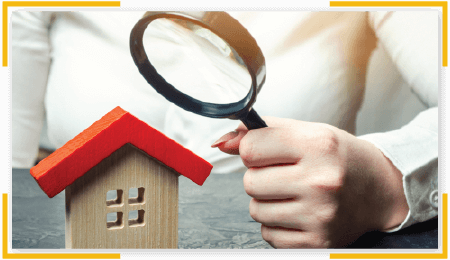
PCA - Assessment & Reporting
How It Works?

Step 1
You send us the deails of the property and architectural floor plan

Step 2
Our experts assess the condition of the property

Step 3
We deliver detailed PCA report to you within 2 weeks
Get In Touch
Need help or additional information?
Give us a call on
(786) 788-0295
Get in touch - 212-575-5300
PCA - Assessment & Reporting Starting from
- Shortest turnaround time of 2 week
- Inspect building cost components
- Get your property assessed by industry expert
- Inspect building cost components
- Inspect optional components like technology & surveillance systems and environmental components
PCA - Assessment & Reporting
Get a precise picture of your property to make better financial decisions
Efficient
We follow ASTM E2018 guidelines for maximum accuracy and efficiency.
Comprehensive
Our inspectors survey every nook and corner to unearth potential deficiencies.
Effective
We recommend the most effective remedial plans that also saves costs.
Enhance Performance and Manage Life Costs Effectively
Professional Property Condition Assessment (PCA) Service

Before we purchase anything, it is common sense to find out everything about the product to get your money's worth. The same approach can be applied to anything you buy- from houses and cars to computers and food items.
Real estate investors also follow the same footsteps when they are going to purchase or lease a new property. They need to find out everything about the building and its condition so that they can plan and budget repairs or maintenance without running into unpleasant surprises.
The norm in the industry is to go for a Property Condition Assessment (PCA) which identifies issues and deficiencies of a current property and proposes remedial actions. Nearby Engineers New York Engineers is a certified engineering agency offering professional PCAs to investors, building managers, owners and insurance companies.
Our team consists of multi-disciplinary engineers who make a thorough inspection of your property and identify areas of concerns, deficiencies and repairs. You can get a detailed picture of the condition of the property and get recommendations on remedial actions with applicable cost implications. Our PCA helps you gain a strong understanding about your investment and determine the capital costs you may need to incur in the future.
We follow strict ASTM E2018 guidelines for maximum efficiency and accuracy. If you are looking to buy or rent a commercial property, make sure to perform a PCA to ensure your money doesn't go down the drain! We have an adept team of architects and engineers ready to help you out with their accurate and in-depth assessments.
The Components of PCA
Property Condition Assessment (PCA) Process
Our PCA follows the guidelines and standards laid down by ASTM E2018. We have experienced engineers with keen eyes who can spot deficiencies and issues with your property efficiently. Our PCA findings help you determine the exact condition of your building and the services you need to carry out for maintenance or repairs.
Here's a close look at our PCA process following ASTM E2018 protocols and regulations-
1. Document Review
We will conduct a review and analysis of documents related to the property. The objective of the document review is to supplement the findings of the walk-through survey and provide a holistic understanding of the building condition and the physical deficiencies. We will review all records or documents that are readily available and reasonably ascertainable Some of the information and documents we review include-
- Certificate of occupancy
- Outstanding and recorded material building code violations
- Recorded material fire code violations
- Government provided information
- Publicly available documents
- Construction and as-built drawings
- Property appraisals
- Safety inspection records
- Warranty information
- Information on historical costs of repairs and maintenance
- Previous PCA reports
- Leasing literature and information
2. Interviews
We will conduct interviews of key personnel before we visit your site for as much information as we can derive. Our team might interview the building owner, property manager, facility engineer or maintenance supervisor to know more about the property and its condition. We can conduct the interviews over the phone, in person or through writing.
Our team may also send a pre-survey questionnaire and include it in our report with the required responses.
3. Walk-Through Survey
The walk-through survey involves visually inspecting the property to gather information on material systems and components. The survey will help us determine the physical deficiencies and areas of concern along with unusual features. Our inspectors may also take photographs to document the conditions of your property. The photographs will include exteriors, front and typical elevations, site work, structural systems, roofing, parking areas, electrical systems, plumbing, HVAC, life safety systems and anything that seem unusual or defective.
The walk-through survey will focus on the following elements-
a. Site
The site survey involves analyzing the general topography of the site and any unusual or problematic issues. We will also inspect your storm water drainage and collection system noting the presence of on-site surface waters, and detention or retention basins.
The site survey will include inspecting the property for major means of ingress and egress. We will also check the material paving and curbing systems. Our team will evaluate your parking spaces including types of parking (surface, subsurface or garages), loading spaces and any known parking inadequacies.
Next, we will observe your patios, plazas and sidewalks to identify any deficiency or unusual features. We will also assess your landscaping including trees, lawns, fences, shrubs, fences and retaining walls. Material site appurtenances such as fountains, ponds, irrigation systems, signage and lighting will also be covered under the survey.
Our inspectors will also take a look at on-site recreational facilities and material utility systems such as special power generation systems and water and wastewater treatment systems. We will record the details of the systems including manufacturer, system type, age, capacity and so on.
b. Structural Frame and Building Envelope
We will analyze the primary buildings including parking structures and identify the basic type of structure for each (wood frame, steel frame, concrete block, precast concrete, and so on). Our inspection will also cover building substructure including foundation system and take note of cellars, basements and crawl spaces. We will also evaluate the building's superstructure or structural frame which include roof framing systems and floor framing systems.
We will also thoroughly inspect the building envelope covering curtain wall systems, facades, glazing system, doors, parapets, stairways, exterior balconies, exterior sealants and more.
c. Roofing
Determining the condition of roofing is crucial as it is the first line of defense against weather elements. We will assess the material roof systems including slope, parapets, drainage and other features in order to identify any scope of repair or replacements. Our team will actively check for leaks and significant ponding to find out areas of concern. We will also evaluate the age of the material roofing system and whether any warranty or bond is in place.
d. Plumbing
The survey includes inspection of material plumbing systems with piping, fixtures and other components. Our team will also assess hot water production facilities and take note of any unusual plumbing systems.
e. Heating
The inspection of heating equipment will involve identifying the type and age of the system, review of past material component upgrades or replacements and the extent of maintenance carried out. We will also make a note of any unusual heating systems such as solar heat, if applicable.
f. Air Conditioning and Ventilation
Our team will inspect and identify the type of ventilation and air conditioning system of the property including chillers, cooling towers, split systems, package units, thermal storage equipment, handlers, material distribution systems and so on. We will also determine the age, past upgrades, repairs or replacements and level of maintenance performed.
We will identify and take note of any special or unusual systems such as cold storage systems, refrigerating systems for ice skating rinks and computerized cooling equipment. Our inspectors will also review the maintenance contract if it exists.
g. Electrical
During our walk-through survey, we will closely inspect your electrical distribution system including transformers, distribution panels, meters, lighting systems, emergency generators and related systems. We will also inspect the general electrical items such as type of wiring, emergency power, energy management systems, lightning protection and so on. If we notice any unusual devices or systems, we will include it in our report.
h. Vertical Transportation
The inspection includes assessment of types and numbers of elevators, escalators, related capacities and call and communication equipment. We will also review the maintenance contract if present.
i. Life Safety
We will assess all life safety and fire protection systems and devices such as sprinklers, standpipes, fire alarm systems, fire hydrants, water storage, fire extinguishers, smoke detection system, lighting, smoke evacuation and more.
j. Other Considerations
Based on your goals and circumstances, we can also inspect other building elements to provide the most accurate and detailed assessment. Some items we may inspect may include-
- Seismic considerations
- Design considerations for natural calamities (flood, snow, hurricane, tornado)
- Environmental considerations
- Pest and mold infestation
- ADA compliance
- Property security systems
- Indoor air quality
4. Estimated Cost
The next step is to prepare an opinion of cost for the remedy of physical deficiencies based on the finding of the walk-through survey and document analysis. The opinion of cost will help you develop a better understanding of the physical condition and value of the property.
The opinion of cost is developed for addressing physical deficiencies and not for visual improvements or maintenance. We will try to capture the market prices so that you can confidently base your calculations on our findings and get a real picture of the scenario.
5. Property Condition Report
All our findings during PCA will be included in a detailed Property Condition Report (PCR). The report will include-
- Summary of the overall property condition along with deficiencies identified
- Description of building components, systems, materials and construction type
- Recommended actions with budgetary costs
- List of deficiencies prioritized according to their seriousness
- Information on capital needs or replacement schedule
- Photographs of systems and deficiencies taken during the inspection
You can make informed decisions based on our PCA and make room for effective negotiations on price. Our findings help you make a sound investment and get the best returns, avoiding costly capital surprises in the long run.
Professional PCAs For Better Investments And Profit
Why Choose Nearby Engineers New York Engineers ?

Nearby Engineers New York Engineers ' PCA services provide real estate investors, owners and lenders an accurate picture of their property's short and long-term capital needs. You can gain an understanding of the technical aspects of the building which enables you to make informed purchasing decisions. We uncover all deficiencies and risks so that you can decide whether the deal is beneficial for you or not.
Our architects and civil, mechanical and structural engineers have years of experience conducting PCAs on properties of all sizes, uses and types. We serve all industries and help them form a clear understanding of current and future capital benefits and risks. Our detailed reports outline the remedial actions and give you a realistic estimation of costs. You can use the findings of our PCA to leverage contract terms and enjoy a better position when it comes to negotiating the price.
We adhere to the general requirements and standards of ASTM E2018. Our service goes much deeper than just fulfilling minimum requirements, as we clearly understand the risks large capital expenditures could bring. Our PCA forms the foundation of your investment helping you take the most informed property decision possible.
Get in touch with us to schedule a Property Condition Assessment for your project.



